Part 2: HR Strategic Management: Building a Solid HR Strategy Customised for Your Organisation's Structural and Cultural Context
In my previous article, I discussed organisational (institutionalisation) levels and types in detail. Before diving into this article, I recommend reading Part 1: Aligning People Strategies with Company Development Stages and Levels first. Here, I will explore how to build a robust HR strategy that fosters a performance-based culture, supporting business growth and objectives.
As explained in my HR Strategy Common Pitfalls article, a common issue HR leaders face when joining a new business is the lack of focus. This often results in arbitrary strategies due to limited guidance from the CEO or the executive leadership team (ELT) on what they want to achieve or the tendency to copy strategies you applied in a similar pervious businesses or common practice and trends. Before crafting your strategy, you must understand the what, why, how, and most importantly, the structural and cultural context of your organisation. Only after this should you proceed to the third stage of crafting strategic alignment and designing the HR strategy.
Stage 1: WHAT
To build a strategy, it is vital to understand the company’s direction by focusing on three key areas:
Company Purpose: Understand the mission, vision, and business objectives.
Business Challenges: Identify key challenges affecting the business, such as disruptive technology, political uncertainty, digitalisation, regulatory requirements, or changing customer behaviour.
Competitive Advantage: Determine the organisation's unique strengths - whether it’s the product, market position, pricing, technology, quality, people, brand, or location.
Understanding these areas will provide insights that will guide you through the why and how stages.
Stage 2: WHY & HOW
People-Related Challenges
Identify critical and bottleneck functions, assess compensation structures, analyse engagement and culture, address generation management, diversity, equity, and inclusion (DEI), work environment, flexibility, talent retention, and succession planning.
HR Focus Areas
Determine which HR areas to prioritise, such as employee value proposition (EVP), talent attraction, sourcing, onboarding, engagement, learning and development (L&D), and knowledge management.
Structural and Cultural Context
HR leaders often skip in-depth analysis of the structural and cultural context, and often move straight to designing the strategy. This lead to misalignment resulting in the “We done everything but still the change needed didn’t happen”. However, analysing these elements is crucial to tailor an HR strategy that best serves the organisation, rather than applying a generic approach.
This context can be divided into four dimensions: people (employees), tasks, leadership, and organisation. Each dimension contains several areas of focus:
|
People |
Tasks |
Leadership |
Organisation |
|
Diversity vs Conformity Appreciation Concept of People
|
Optimisation vs Disruption Task Certainty Thinking vs Acting
|
Professional superiority Dominant Leadership style Autonomy & Self-regulation |
Divisions of labour Task dynamics Consequences & commitment |
Some key areas are explored further below:
Diversity vs Conformity
Is the organisation diverse or conformist in its approach, and is it suited to its industry or not?
Conformity, where employees fit into a common standard, and fits into a specific predefined competencies model. This is the most common traditional HR trend. But you need to remember that these suits industries requiring homogeneity and standardisation, such as manufacturing, retail, and hospitality, but not suitable for all industries.
Diversity, is where individuality is needed and valued. Employees don’t need to look and fit into the same box. Hiring is more for the “culture add” rather than the misconception of “culture fit”. This is more suitable in sectors like technology and R&D where diversity in thought and approach fosters creativity and innovation, which is critical for long-term sustainability and success.
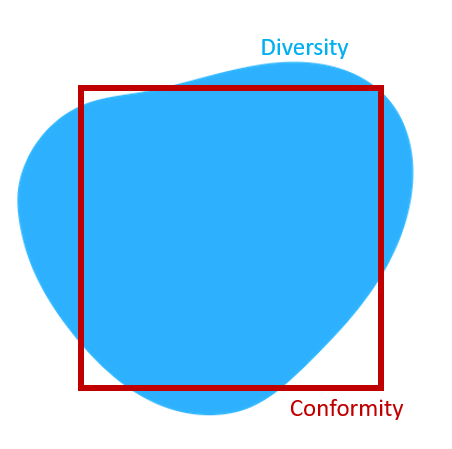
Appreciation: Traditional vs Inverted Pyramid
In a traditional hierarchy, status increases as one moves closer to the CEO and leadership team, with perks like larger offices and exclusive parking. In contrast, an inverted pyramid structure values employees as the real drivers of success, with the highest appreciation directed towards them. This approach is particularly favoured by Generation Y and Z which day after day becoming the more dominant population of workforce. They value treatment equality, individual expression, and minimal hierarchy in the structure.
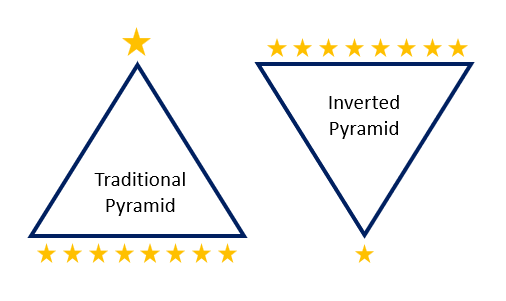
Concept of People
Understanding how the organisation views its people helps shape your strategic HR topics. This area considers how management perceives its employees. Concepts like McGregor’s Theory X-Y and Hofstede’s cultural dimensions as well as generation management can provide insight into management’s perception of employees.
Analysing these factors will guide and direct you when building the alignment and HR topics as it will define the approaches and methodologies you will need to adapt.
Optimisation vs Disruption Development
Determine whether the business is focused on steady, incremental development (e.g., manufacturing, hospitality) or operates in a disruptive environment (e.g., technology), where rapid changes can impact business success. This distinction will guide your strategies around talent development, attraction, and retention, ensuring the organisation fosters a culture that supports either long-term stability or innovation and agility.
Task Certainty
How predictable (level of certainty) are the processes and outcomes in your organisation? High-certainty process and outcomes environments, such as retail or hospitality, involve repetitive tasks with clear outcomes. In contrast, low-certainty process and outcome environments, such as R&D or product development, involve more ambiguity where there is more complex project with bigger scopes and uncertain outcomes. This understanding and distinction will guide decisions while setting up appropriate strategies for talent acquisition, retention, and performance management.
Thinking vs Acting
Does the organisation operate on long, extensive planning cycles, or does it use shorter, more frequent cycles? In environments with low task certainty, shorter cycles are more common. This will influence your approach to performance management and evaluation — whether objectives are set annually or reviewed more frequently to adapt to changes in the business environment.
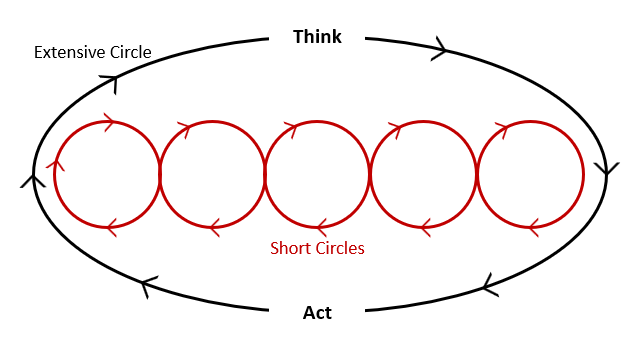
Professional Superiority
Is the organisation structured around hierarchical authority or based on expertise? In traditional organisations, managers are seen as the ultimate authority. In contrast, modern organisations, particularly in sectors like technology, value the expertise of employees more, with managers acting as facilitators and enablers rather than sole decision-makers. HR must consider this when shaping feedback systems, compensation, and recognition strategies.
The diagram above shows the different levels. The red T represent the managers, and the horizontal line represent the knowledge vs the vertical line that represent the expertise.

Traditional: Managers have a higher status just because they are managers. The manager has the insight, the clue and authority according to the hierarchy. This is visible in the traditional organisations.
Modern: Managers are not necessarily the experts. They have a broad perspective and general knowledge, while employees are the ones with specific expertise but may not have an overall view of the business. This is more visible in more modern organisations such as technology companies and functions that is expertise-based such as IT
Dynamic: Leadership can be dynamic, shifting based on the task or project. Managers are not necessarily superior. The structure is based solely on expertise, and someone may temporarily lead depending on their expertise in the specific task or project. This is more visible in academical institutions or functions such as HR and legal.
Autonomy and Self-Regulation
How much autonomy do employees have? In a participative culture, employees are trusted to manage their own work and make decisions without constant oversight, whereas in a more autocratic culture, decisions are centralised. HR strategies should reflect the level of autonomy and trust within the organisation, particularly when it comes to managing remote work, decision-making, and cross-departmental collaboration. Also, it is an opportunity where HR strategic influence should kick in and advise the ELT if this needs to change to support talent acquisition, retention and leverage engagement specially with the current economical and work trends in today’s business environments.
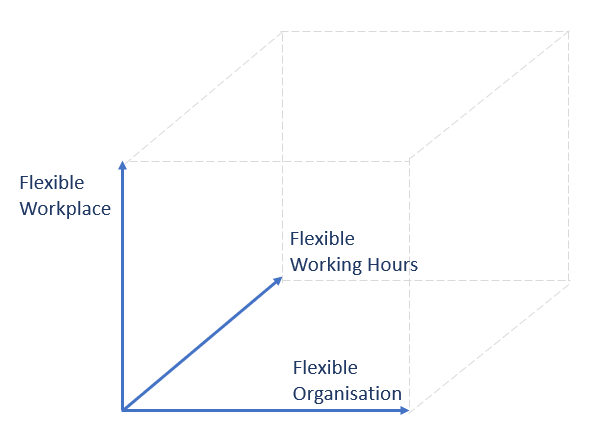
Division of Labour vs Task Dynamics
Divisions of Labour: People are expected to focus solely on tasks within their own functions and are neither expected nor encouraged to engage with work from other functions. This leads to the formation of departments. The advantage of this approach is that it increases efficiency and speeds up processes. However, the downside is that success is often measured at the departmental or leadership level, rather than across the entire organisation.
Task Dynamics: In this approach, teams consist of individuals from different functions or divisions with varied backgrounds, working together on interrelated tasks or projects. The advantage of task dynamics is that ideas can come from unexpected sources, fostering diversity of thought, as multiple brains, knowledge, and expertise are brought together. This leads to collective success, benefiting both the team and the organisation as a whole, rather than one department or function. However, the drawback is that this approach can slow down effectiveness and decision-making. Task certainty should be considered here.
Depending on whether the business follows divisions of labour or task dynamics, HR will need to shape an organisational culture that aligns with the chosen approach. HR must also tailor the structure, strategy, systems, and processes accordingly. For example, will pay be used as an extrinsic motivator, and will you implement individual or team reward systems?
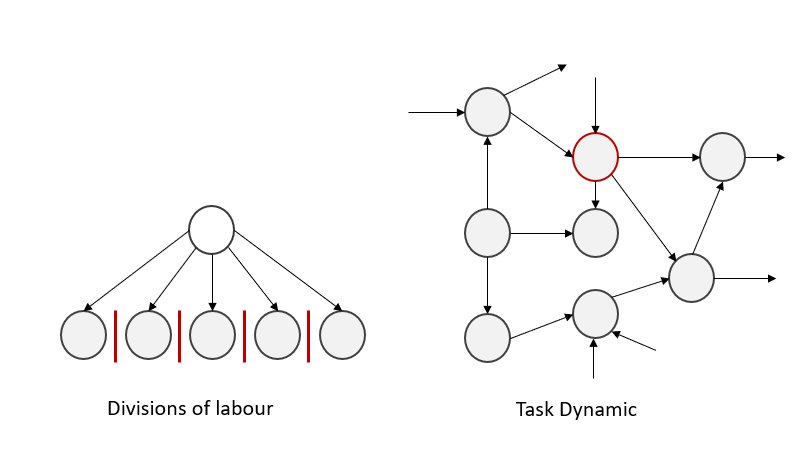
Stage 3: Strategic Alignment & Building Strategy
Once Stages 1 and 2 have been thoroughly completed, incorporating the organisation’s structural and cultural context, HR leaders can move to the final stage—aligning the strategy with the business. This involves designing the HR strategy, annual operating plan (AOP), and all associated systems, processes, and technologies.
It is essential to establish clear measurement metrics (KPIs) to track both quantitative and qualitative outcomes. As the saying goes, “you can’t manage what you can’t measure.”
Conclusion
Building a solid HR strategy requires a deep understanding of the organisation's structural and cultural context. By thoroughly analysing the company’s purpose, challenges, competitive advantage, and internal dynamics, HR leaders can craft a strategy that aligns with business goals and fosters a performance-driven culture. The key is a customised, not one-size-fits-all approach, supported by clear metrics to measure success ensures that the strategy is both relevant and effective for long-term success.
Reference: Armin Trost (2019) 'Human Resources Strategies' of Hochschule Furtwangen University (HFU), Germany



Comments
No Comments added, be the first...